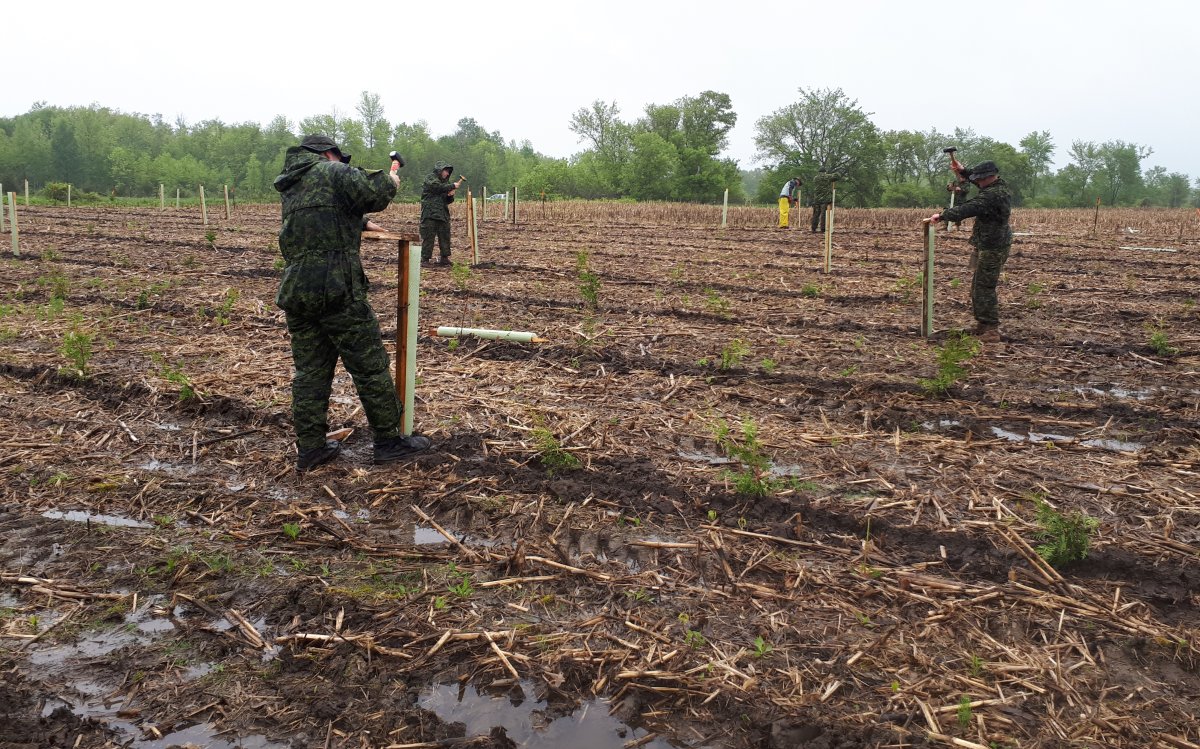More than 6,800 trees and shrubs were planted during the first year of a three-year project at one of the largest wetlands in southeastern Ontario.

The Lower Trent Conservation Authority announced Monday that more than 6,842 trees and shrubs were planted this year at the Murray Marsh Natural Habitat Area, a provincially significant wetland south of Campbellford in the municipalities of Brighton and Quinte West.
The three-year natural buffer planting project was supported by Forest Recovery Canada and TD Friends of the Environment Foundation.
Fifteen native species were planted in 2019 in the wetland, which covers about 3,769 hectares (approximately 10,000 acres).
The wetland is the only major flood water storage area for the Trent River south of Campbellford, according to the conservation authority.
“Natural buffers protect transition areas around wetlands from agricultural impacts, such as soil erosion and nutrient run off, while also providing wildlife habitat,” stated Ewa Bednarczuk, the authority’s ecology and stewardship specialist.

Get breaking National news
“The Murray Marsh Natural Habitat Area Restoration Project has now established approximately 6 hectares of treed wetland buffer on Lower Trent Conservation owned lands, which helps to safeguard the quality of water in the Trent River waterway.”
Along with conservation staff, volunteers, including the Hasty P’S (Hastings and Prince Edward Regiment), dedicated more than 90 hours of their time and energy this summer to assist with the first year of the project.
“Our volunteers have been outstanding,” said Bednarczuk.
“We simply couldn’t have accomplished all that we did this year without them and our generous donors.”
To date, Lower Trent Conservation has received close to $23,000 in grant money to help cover the cost of the project in Year 1.
Bednarczuk says Lower Trent Conservation is thrilled to report a 95 per cent survival of the planted trees, which include white pine, tamarack, red oak and silver maple, following the first growing season.
Plans for the project’s second year are well underway, with the authority preparing to double the effort in 2020.
Anyone interested in donating to the Murray Marsh Natural Habitat Area Restoration Project or volunteering with next year’s natural buffer plantings is encouraged to contact Lower Trent Conservation at 613-394-4829 or email.





Comments